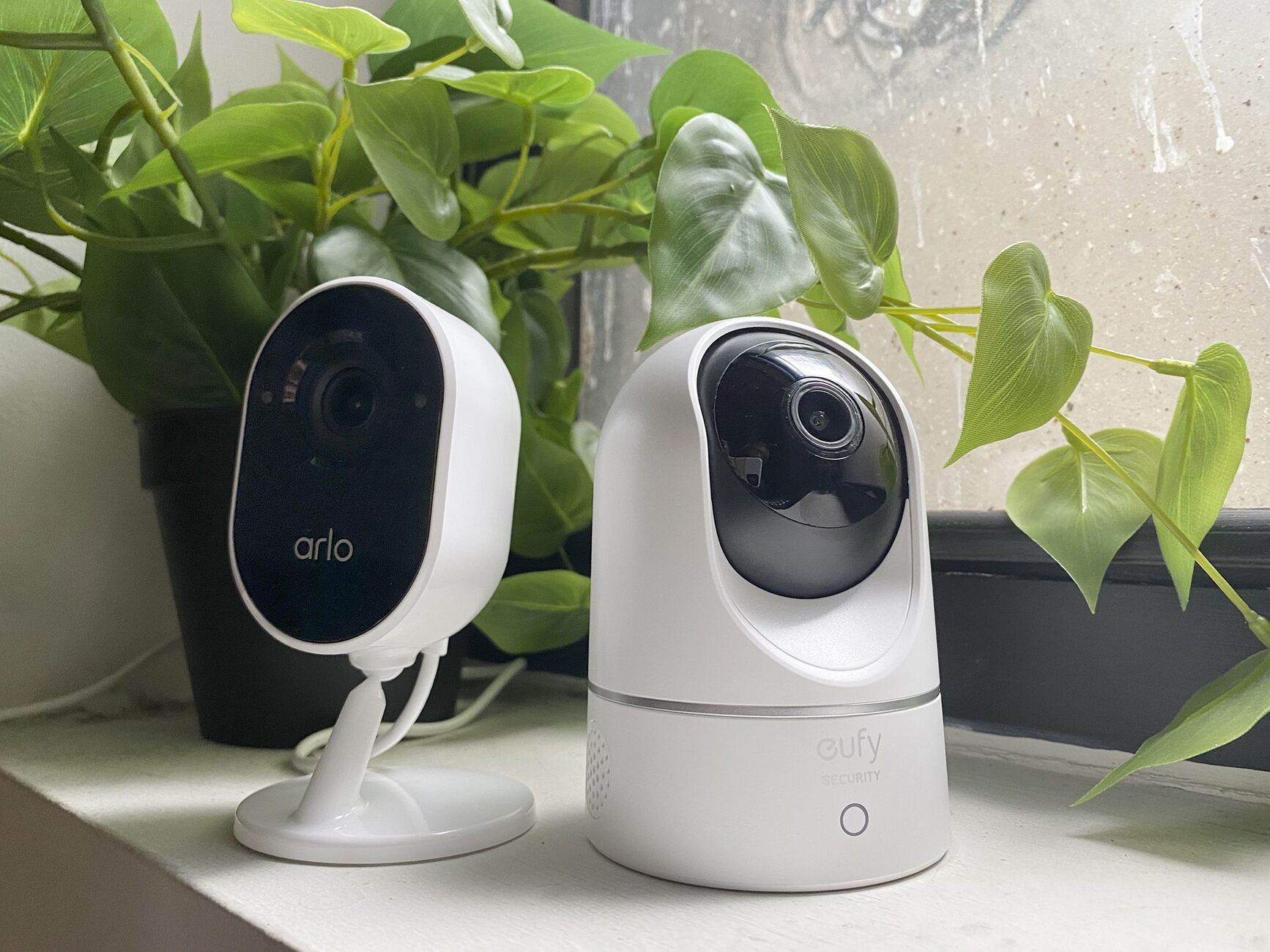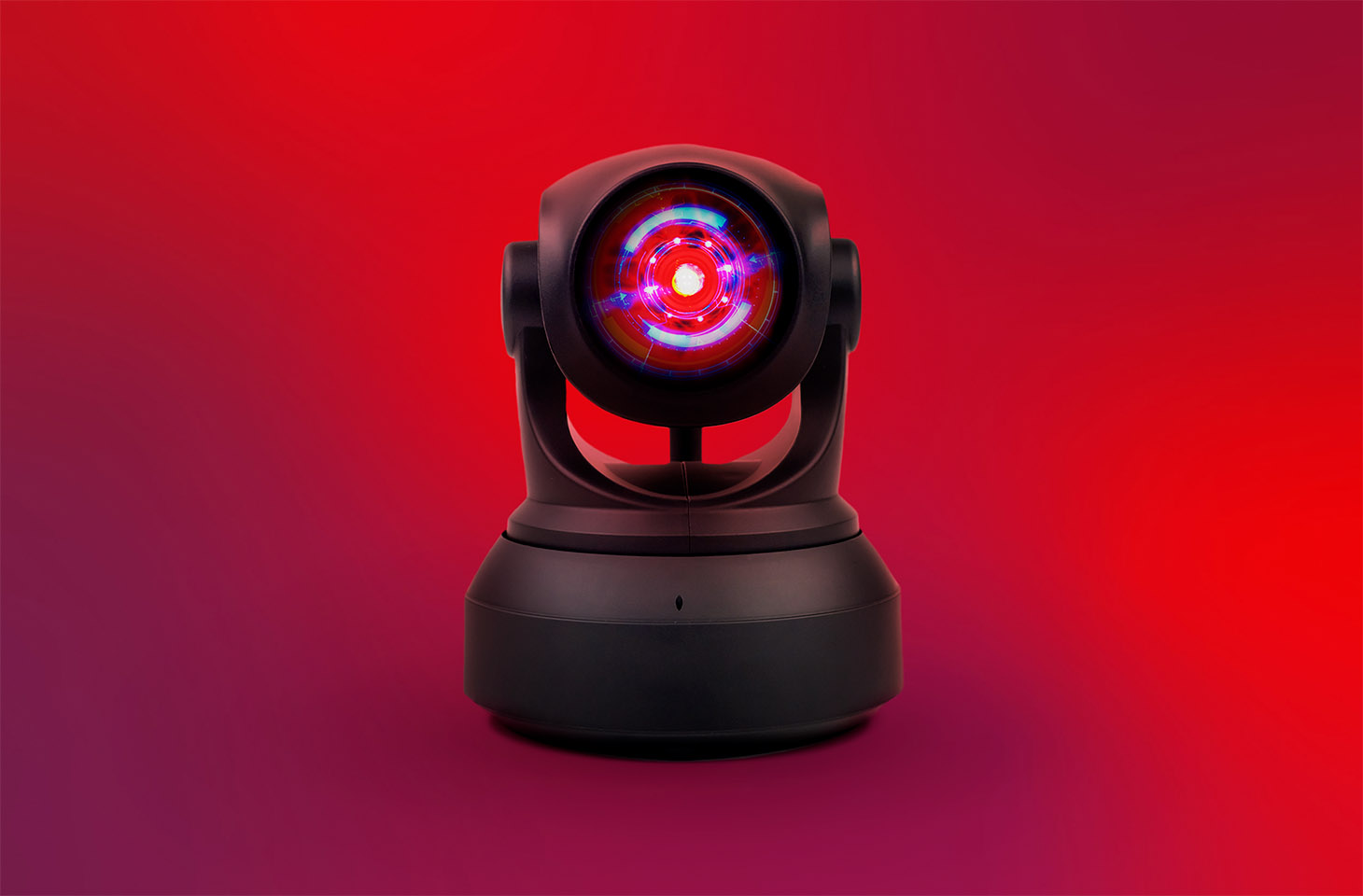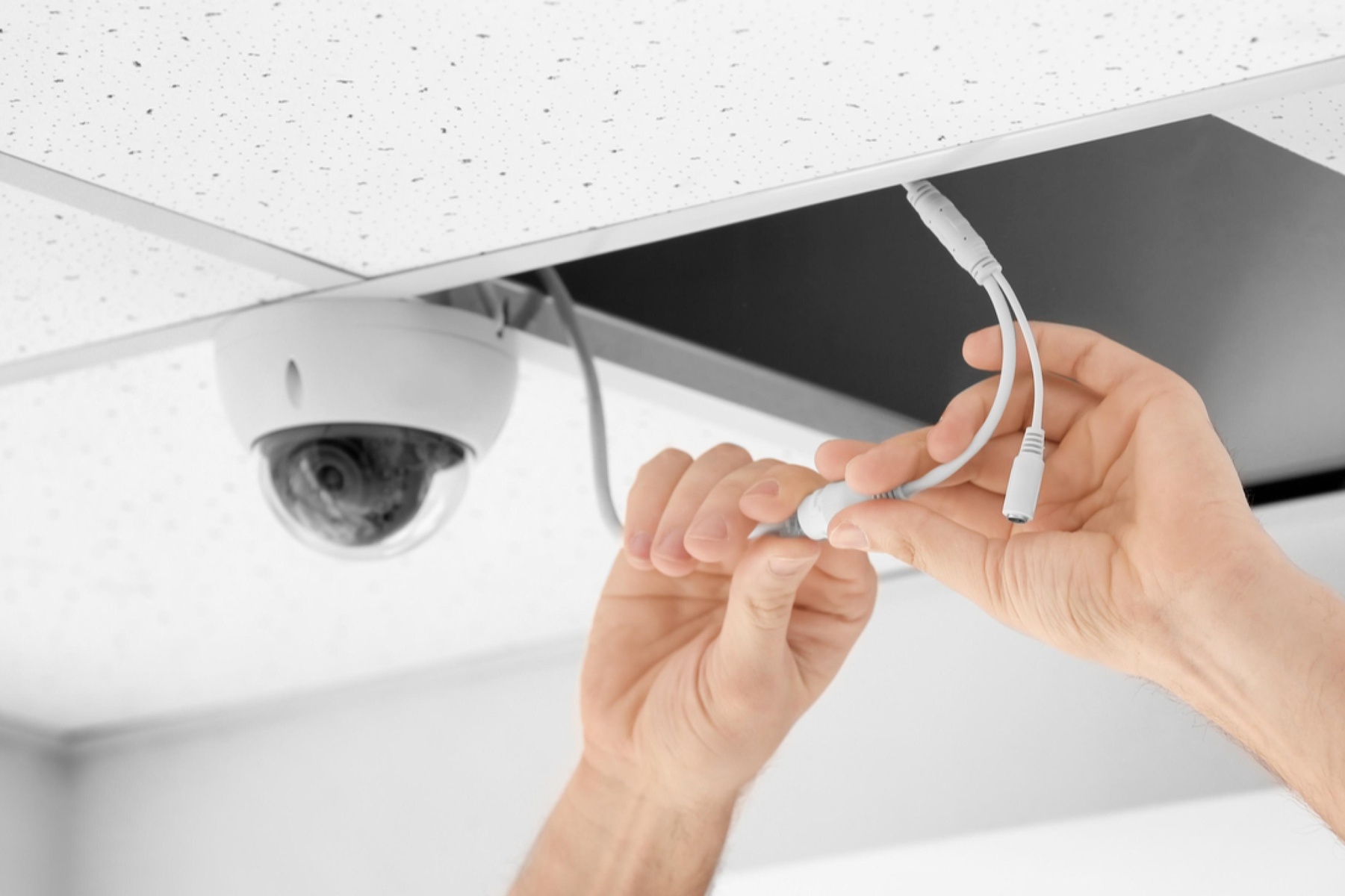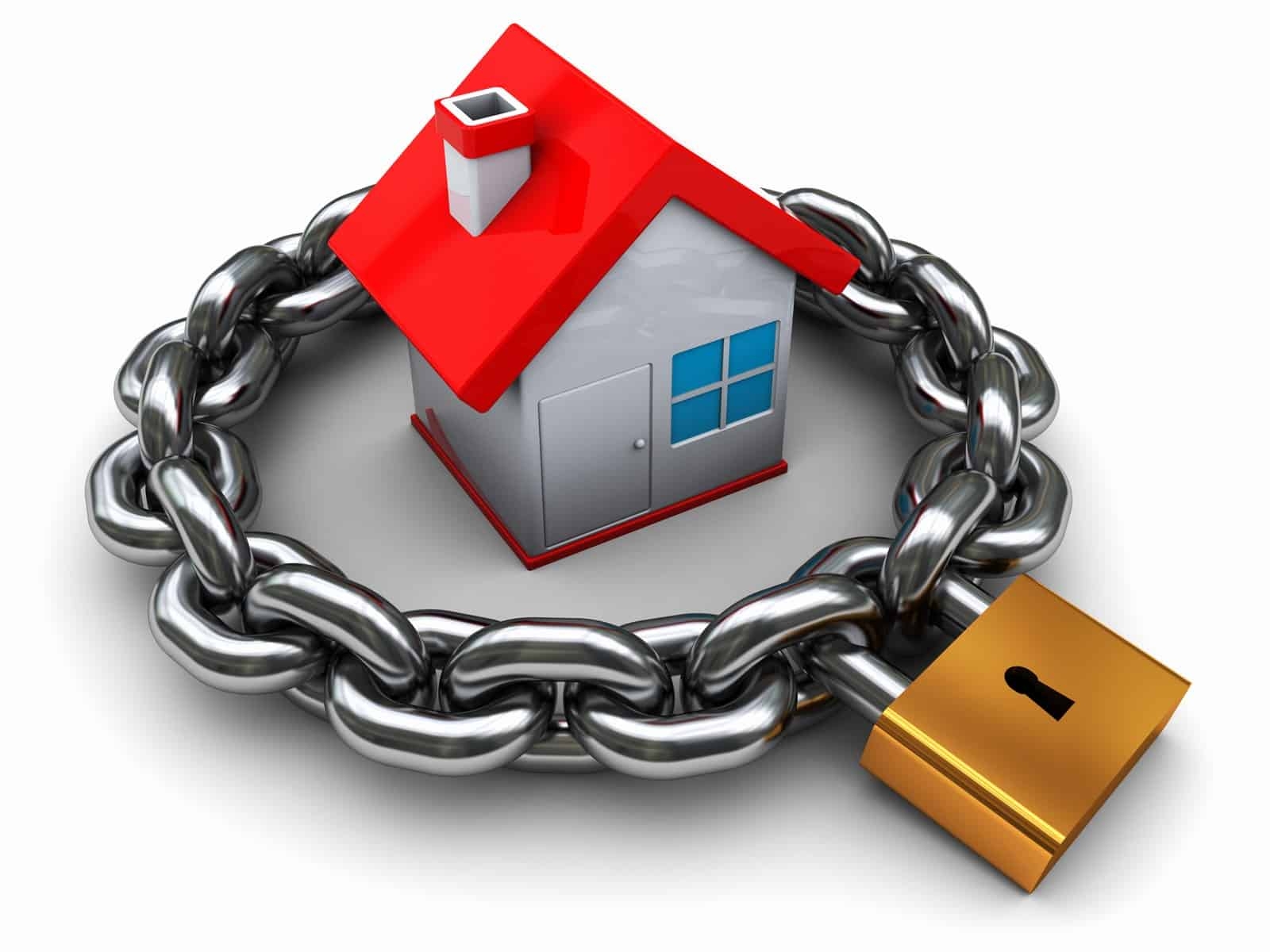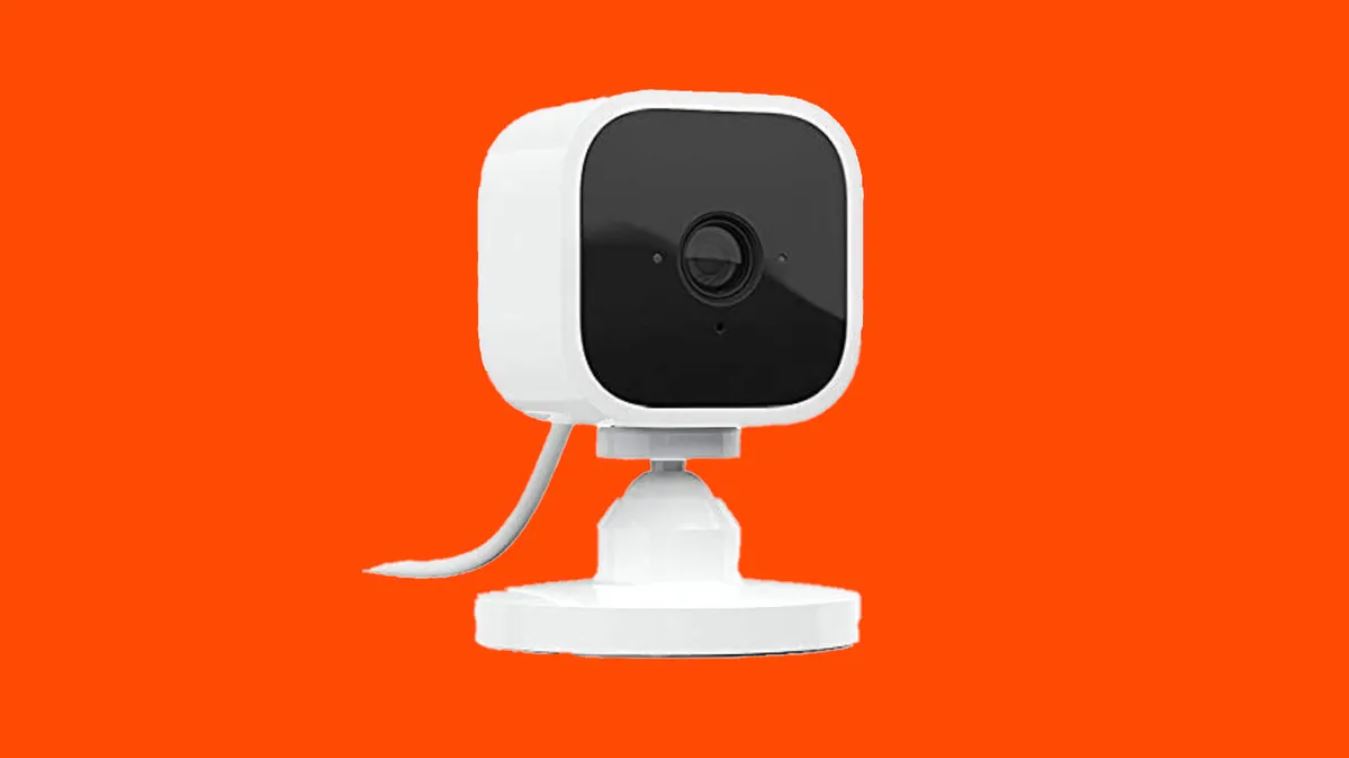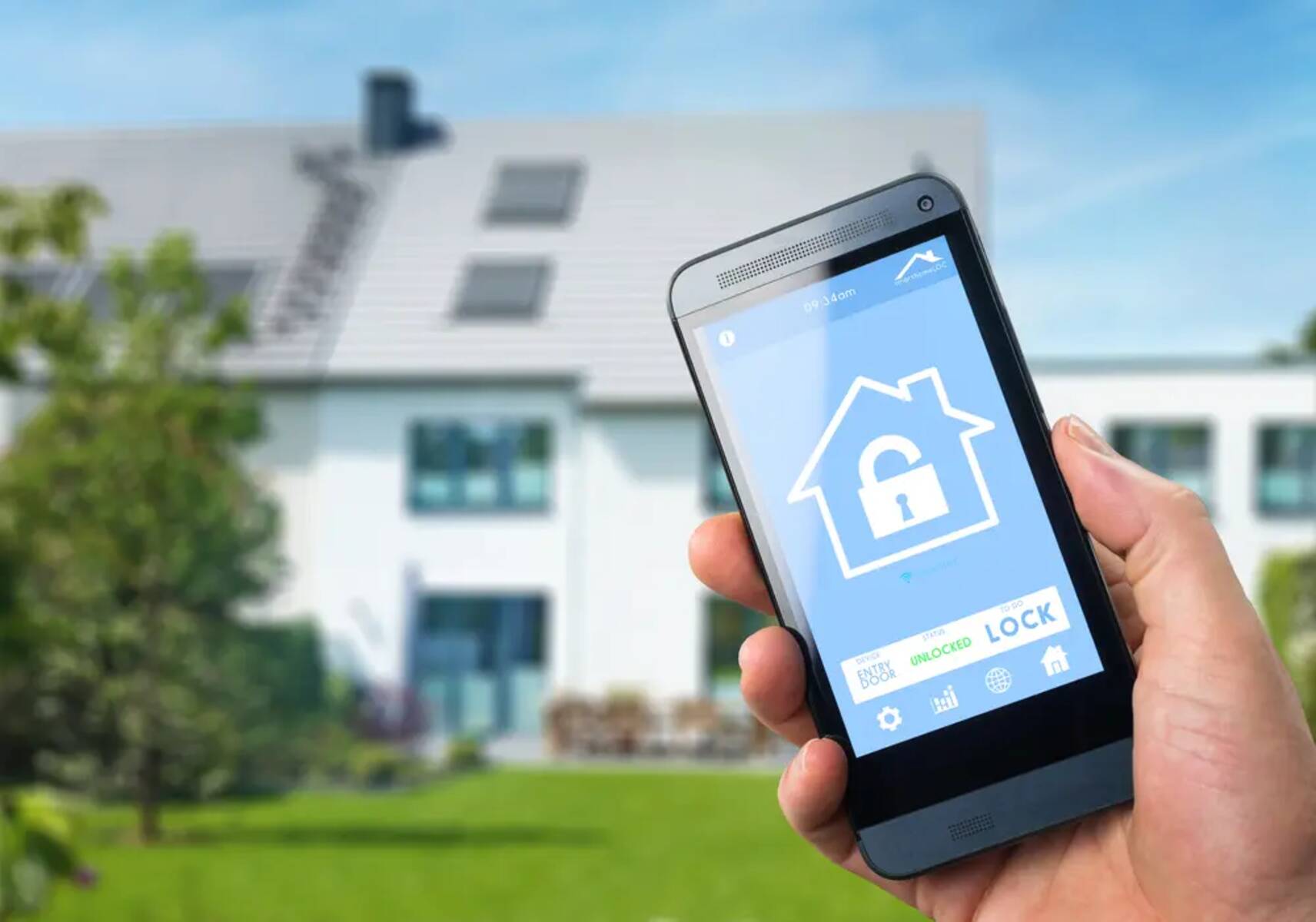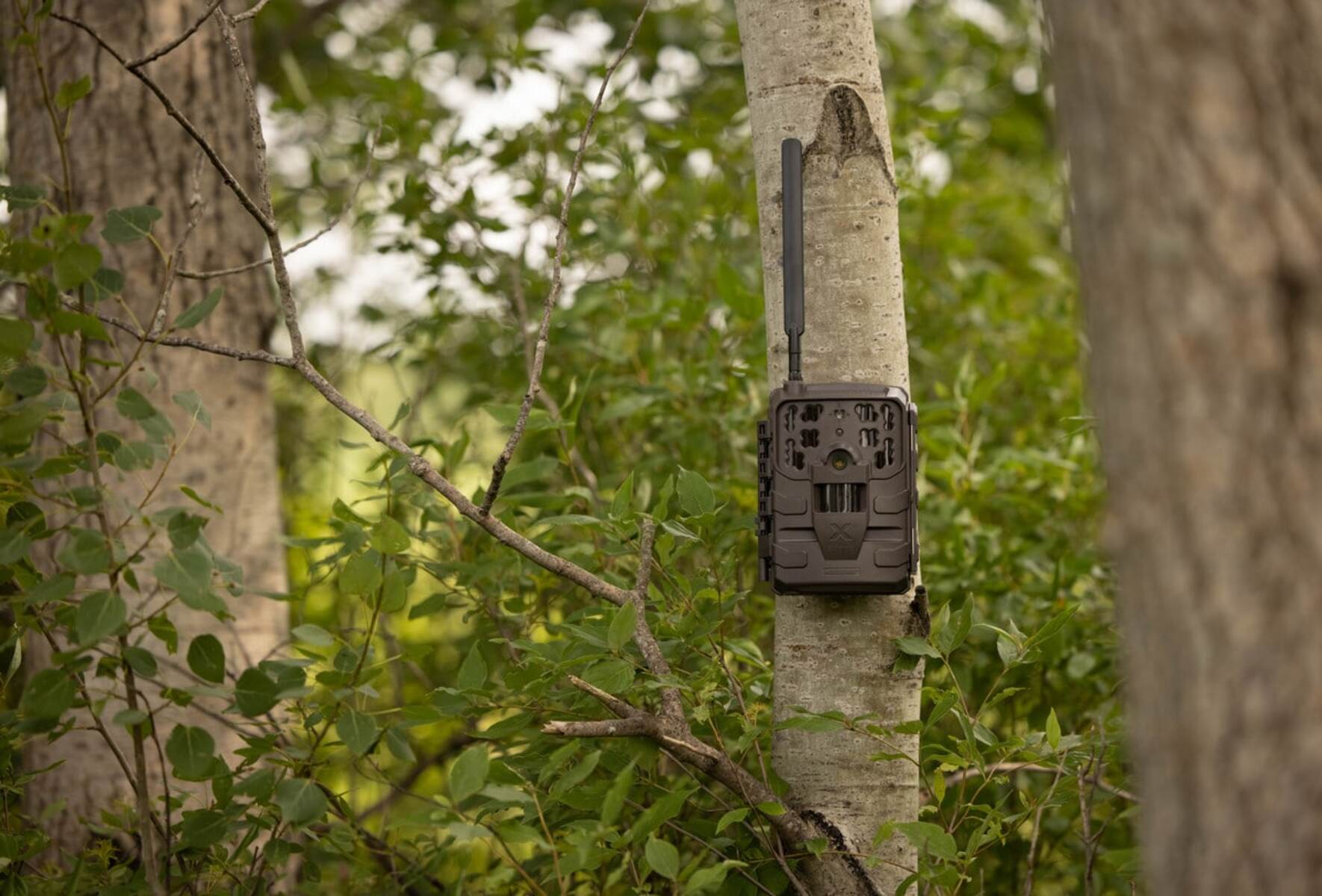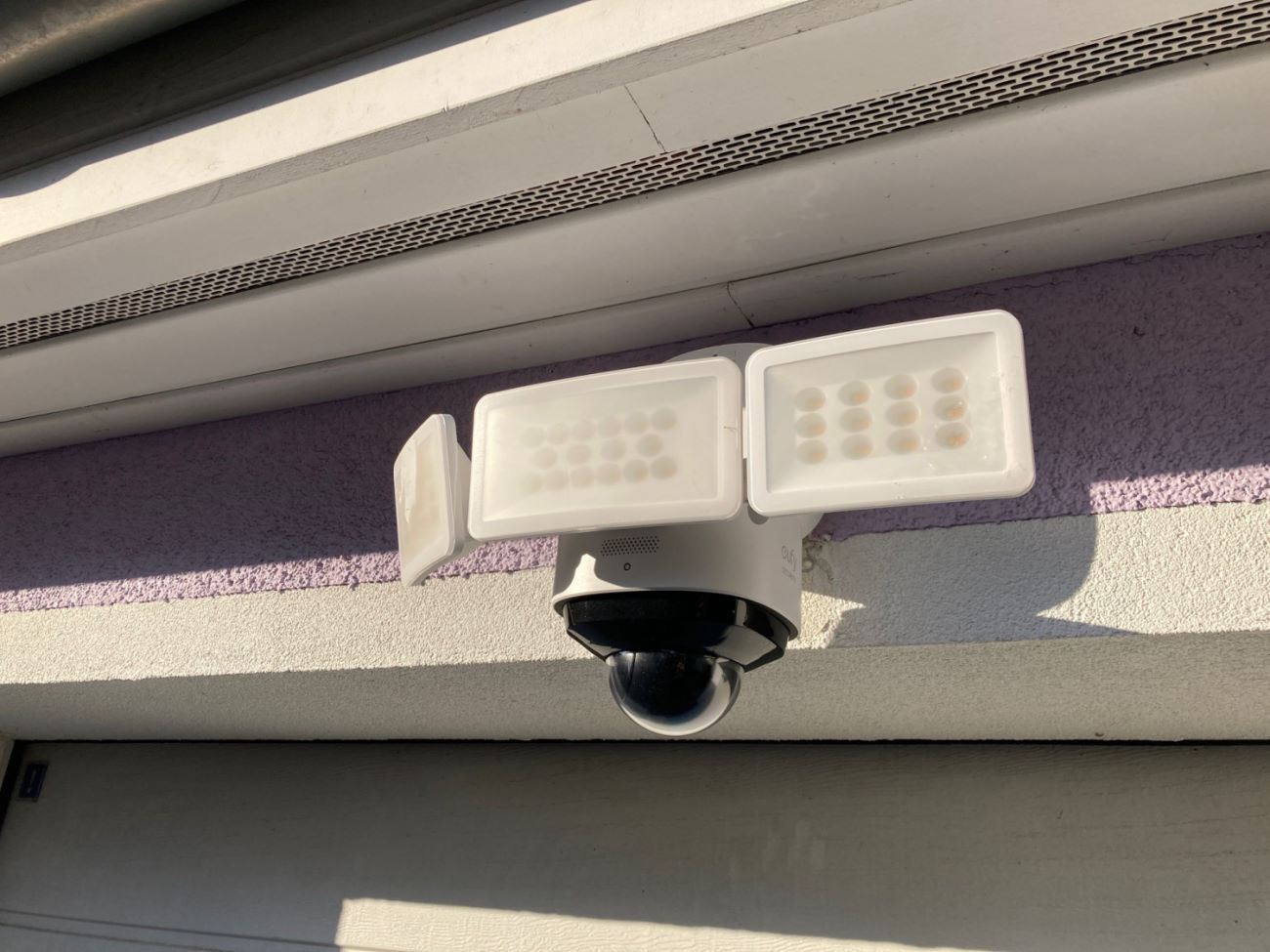Importance of Home Security Cameras
Home security cameras play a crucial role in safeguarding your property and providing peace of mind. With the rise in crime rates, having a reliable surveillance system has become essential for homeowners. Whether you live in a small apartment or a spacious estate, installing security cameras can significantly enhance the safety of your home. Here are some reasons why home security cameras are important:
- Deterrence: Just the sight of security cameras can act as a powerful deterrent to potential burglars. Criminals are less likely to target a home with visible surveillance systems, as they prefer to avoid getting caught on camera.
- Evidence Collection: In the unfortunate event of a break-in or any suspicious activity, having security cameras can provide valuable evidence. The recorded footage can assist law enforcement agencies in identifying the culprits and help with the overall investigation.
- Remote Monitoring: Modern security cameras allow homeowners to monitor their property from anywhere at any time. With the use of mobile apps, you can check the live feed or review the recorded footage remotely, ensuring you stay connected and informed about the security of your home even when you are away.
- Insurance Benefits: Installing home security cameras may sometimes result in lower insurance premiums. Insurance companies often offer discounts to homeowners who have robust security measures in place, as it reduces the risk of theft or property damage.
- Peace of Mind: Knowing that your home is under constant surveillance can provide a sense of security and peace of mind. Whether you are at work, on vacation, or just sleeping at night, the presence of security cameras can alleviate concerns and allow you to feel safe within your own home.
Investing in home security cameras is an investment in the safety and protection of your family and property. The benefits they provide, such as deterrence, evidence collection, remote monitoring, insurance benefits, and peace of mind, make them an essential component of any home security system. By carefully selecting and strategically placing cameras, you can enhance the security of your home and deter potential intruders. Remember, it is crucial to choose high-quality cameras that suit your specific needs and provide clear and reliable footage. With the right security cameras in place, you can protect what matters most to you.
Factors to Consider When Choosing Cameras
When it comes to selecting home security cameras, there are several important factors to consider. Each homeowner’s needs and preferences may vary, so it’s essential to evaluate these factors to ensure you choose the right cameras for your specific requirements. Here are some key factors to keep in mind:
- Camera Resolution: The resolution of the camera determines the image quality. Higher resolution cameras will provide clearer and more detailed footage. Consider cameras with at least 1080p or higher for optimal clarity.
- Field of View: The field of view (FOV) determines the coverage area of the camera. A wider FOV will capture more of the surroundings, minimizing blind spots. Consider the size of the area you want to monitor and choose cameras with suitable FOV.
- Connectivity: Cameras can use different connectivity methods, such as wired or wireless. Wired cameras offer a stable connection but require professional installation. Wireless cameras are easier to install but may suffer from signal interference or range limitations.
- Camera Type: There are various camera types available, including dome, bullet, and PTZ (pan-tilt-zoom). Each has its own advantages and limitations. Dome cameras are discreet and offer 360 degree coverage, while bullet cameras are more visible and suitable for outdoor use. PTZ cameras allow remote control of the viewing direction.
- Camera Features: Consider additional features like night vision, motion detection, two-way audio, and smart integration. Night vision ensures clear footage in low-light conditions, while motion detection can trigger alerts or recording when movement is detected. Two-way audio enables communication with individuals near the camera, and smart integration allows integration with other smart home devices.
- Storage Options: Determine how the camera stores recorded footage. Options include local storage via SD card, cloud storage, or a combination of both. Cloud storage allows access to footage from anywhere, while local storage provides more control over data.
- Budget: Set a budget for your camera system and consider the overall cost, including cameras, installation, and any additional accessories or subscriptions required.
By considering these factors, you can make an informed decision when selecting home security cameras. Assess your specific needs, prioritize essential features, and ensure the chosen cameras align with your budget. Additionally, consult with professionals or reputable retailers to gain valuable insights and guidance. Keep in mind that the goal is to enhance the security of your home, so invest in high-quality cameras that meet your requirements and provide reliable surveillance.
Area Coverage
When determining the number and placement of home security cameras, it is essential to consider the area coverage you want to achieve. The objective is to ensure that the cameras cover all vulnerable areas and potential entry points of your home. Here are some factors to consider when assessing the area coverage:
- Exterior Perimeter: Start by assessing the exterior perimeter of your property. Identify the main entrances such as front and back doors, as well as any ground-floor windows. These areas are typically the most vulnerable to break-ins and should be a top priority for camera coverage.
- Backyard and Side Yards: If you have a backyard or side yards, consider placing cameras to cover these areas. Backyards often contain valuable items such as outdoor furniture, toys, or recreational equipment. Side yards can serve as access points to the backyard or provide hiding spots for intruders.
- Driveway and Garage: The driveway and garage are important areas to monitor. Install cameras to capture any activity or vehicles entering or leaving your property. This can help with identifying any suspicious vehicles or monitoring package deliveries.
- Interior Spaces: Assess the key interior spaces that require monitoring, such as the main living areas, hallways, and stairways. These areas are important for detecting any unauthorized access within your home.
- Access Points: Identify all access points into your home, including doors, windows, and sliding glass doors. Each access point should be covered by a camera to capture any potential break-ins or attempts at forced entry.
- Blind Spots: During the assessment, pay attention to any potential blind spots where an intruder could easily avoid being detected by the cameras. Strategically place additional cameras or consider using cameras with a wider field of view to minimize these blind spots.
The area coverage of your security cameras is critical for ensuring comprehensive surveillance. By carefully assessing the exterior perimeter, backyard, side yards, driveway, garage, interior spaces, access points, and blind spots, you can determine the best placement and number of cameras to achieve optimal coverage. It is essential to strike a balance between covering all vulnerable areas and maintaining your privacy. To ensure the highest level of security, consult with professionals who can provide expert guidance on camera placement and coverage based on your specific property layout and security needs.
Camera Types and Features
When choosing home security cameras, it’s important to understand the different types available and the features they offer. Each camera type and feature has its own advantages and can cater to specific surveillance needs. Here are some common camera types and features to consider:
- Dome Cameras: Dome cameras are named after their dome-shaped design. They are commonly used for indoor surveillance but can also be used outdoors. Dome cameras are discreet and blend well with the surroundings. They offer a wide field of view and are difficult for intruders to tamper with due to their vandal-resistant design.
- Bullet Cameras: Bullet cameras are cylindrical and are typically used for outdoor surveillance. They are highly visible, which can act as a deterrent to potential intruders. Bullet cameras are weatherproof and offer a longer range for capturing detailed images. They are an excellent choice if you want to monitor specific areas with precision.
- PTZ (Pan-Tilt-Zoom) Cameras: PTZ cameras are equipped with motorized controls that allow you to remotely control the direction, tilt, and zoom of the camera. This provides flexibility in monitoring a larger area with a single camera. PTZ cameras can be programmed to automatically scan specific areas or respond to motion detection, making them ideal for comprehensive surveillance.
- Wireless Cameras: Wireless cameras use Wi-Fi or other wireless technologies to transmit video footage. They are easy to install and offer flexibility in camera placement. However, wireless cameras can be susceptible to signal interference and range limitations, so it’s important to ensure a reliable Wi-Fi connection or consider wired alternatives for more stable performance.
- Night Vision: Cameras with night vision capabilities use infrared technology to capture clear footage in low-light or no-light conditions. This is crucial for monitoring areas during nighttime or in poorly lit environments. Consider cameras with infrared LEDs or advanced low-light imaging sensors for enhanced night vision capabilities.
- Motion Detection: Cameras equipped with motion detection sensors can automatically detect movement within their field of view. When motion is detected, these cameras can send notifications or start recording, alerting you to any potential activity. This feature minimizes the need for continuous recording and helps conserve storage space.
- Two-Way Audio: Cameras with two-way audio capability enable communication between you and individuals near the camera. This feature is useful for remotely speaking to visitors, delivery personnel, or deterring intruders. It enhances security by allowing real-time interaction from any location.
- Smart Integration: Some cameras offer integration with smart home devices or platforms. This allows you to access and control the camera through a central hub or mobile app along with other smart home functions. Integrating your security cameras into a smart home ecosystem provides seamless control and enhances the overall security system.
Consider your specific surveillance needs and the features each camera type offers when choosing home security cameras. Dome cameras, bullet cameras, PTZ cameras, and wireless cameras have their own strengths and are suitable for different situations. Additionally, features like night vision, motion detection, two-way audio, and smart integration can provide additional functionality and convenience. Evaluate your requirements and consult with professionals or reputable retailers to select the camera types and features that best meet your needs
Indoor vs Outdoor Cameras
When choosing home security cameras, it’s important to consider whether you need indoor cameras, outdoor cameras, or a combination of both. Each type of camera is designed to suit specific environments and has unique features to address different surveillance requirements. Here’s a breakdown of the key differences between indoor and outdoor cameras:
Indoor Cameras:
Indoor cameras are designed for surveillance within the confines of your home. They are typically smaller, more discreet, and blend well with interior decor. Some key considerations for indoor cameras include:
- Design: Indoor cameras come in various designs, such as dome cameras, cube cameras, or even hidden cameras. Choose a design that suits your preferences and integrates seamlessly with your home’s interior.
- Resolution: Since indoor cameras are usually placed in smaller areas, a lower resolution may suffice. A resolution of 720p or 1080p is typically suitable for indoor monitoring.
- Features: Indoor cameras may offer additional features such as two-way audio, motion detection, or integration with smart home devices. Consider the features that are most relevant to your indoor surveillance needs.
Outdoor Cameras:
Outdoor cameras are specifically designed to withstand outdoor elements and provide surveillance for the exterior of your home. They have robust construction to withstand harsh weather conditions and potential vandalism. Here are some important factors to consider for outdoor cameras:
- Weather Resistance: Outdoor cameras must be weatherproof and able to handle rain, snow, extreme temperatures, and other outdoor conditions. Look for cameras with an IP rating indicating their level of weather protection.
- Night Vision: Since outdoor areas tend to have lower lighting conditions at night, outdoor cameras should have excellent night vision capabilities. Consider cameras with IR illuminators or low-light sensors for clear footage in darkness.
- Wide Dynamic Range (WDR): WDR is an important feature for outdoor cameras as it allows the camera to capture clear images in scenes with both bright and dark areas, such as when capturing a person under the shade of a porch while also encompassing a bright sunny area.
- Vandal Resistance: Outdoor cameras should have a robust design to deter vandalism attempts. Look for cameras with sturdy housing and anti-tamper features.
In some cases, you may want to consider a combination of both indoor and outdoor cameras to achieve comprehensive surveillance coverage. By strategically placing indoor cameras to monitor specific rooms and outdoor cameras to cover entry points, driveways, and yard spaces, you can create a well-rounded security system. Remember to choose cameras that are specifically designed for either indoor or outdoor use, as they are optimized to perform in their respective environments.
Placement of Cameras
The placement of home security cameras is crucial for maximizing their effectiveness and ensuring comprehensive surveillance coverage. Strategic placement will help capture clear and useful footage, deter potential intruders, and provide you with peace of mind. Here are some key factors to consider when determining the ideal placement for your cameras:
- Entry Points: It’s essential to cover all entry points into your home, such as front and back doors, as well as ground-floor windows. Place cameras in a way that captures the face of anyone entering or exiting your property.
- Height and Angle: Mount the cameras at a suitable height and angle to capture the desired area effectively. Aim for a downward angle to ensure facial recognition and clear identification of individuals.
- Vulnerable Areas: Identify vulnerable areas that are attractive to intruders, such as side doors, windows, or blind spots. Ensure these areas are covered by placing cameras strategically to deter potential break-ins.
- Coverage Area: Consider the field of view and coverage area of each camera. Adjust the placement to cover as much area as possible without any blind spots. Utilize wide-angle lenses or PTZ cameras for broader coverage.
- Perimeter Surveillance: Place cameras along the perimeter of your property to monitor any activity near fences, gates, or walls. This provides an extra layer of security and helps detect any unauthorized access.
- Interior Spaces: If you have valuable belongings, consider placing cameras in areas such as living rooms, bedrooms, or home offices. This can help capture evidence in the event of a break-in and provide peace of mind when you’re away.
- Driveway and Garage: Install cameras to monitor your driveway and garage entrances. It’s important to capture any vehicles entering or leaving your property, especially if you live in a neighborhood with a high incidence of vehicle-related crimes.
- Wire Management: Ensure that cables and wiring for the cameras are properly concealed or out of reach. This prevents intruders from tampering with or disabling the cameras.
- Lighting Conditions: Consider the lighting conditions in the areas you want to monitor. Adjust camera placement accordingly to avoid backlighting or excessive glare that may impact the quality of the footage.
- Privacy Consideration: Respect the privacy of your family and neighbors when placing cameras. Avoid monitoring areas where privacy is expected, such as bathrooms or bedrooms.
Every home is unique, so it’s important to customize camera placement to suit your specific needs. Assess the layout of your property, identify potential vulnerabilities, and strategically position cameras to provide optimal coverage. Consider consulting with professionals or seeking guidance from reputable security companies to ensure you make the most informed decisions when it comes to camera placement.
Number of Cameras Needed for a Small Home
When determining the number of cameras needed for a small home, it’s important to balance budget considerations with the goal of achieving comprehensive coverage. While the exact number may vary depending on the layout and specific requirements of each home, here are some general guidelines to consider:
Entry Points: Start by identifying all entry points into your home, such as front and back doors, as well as ground-floor windows. These areas are typically the most vulnerable and should be a priority for camera coverage. A minimum of one camera should be placed at each entry point to capture activity and deter potential intruders.
Interior Spaces: For a small home, consider placing a camera in a central area that provides an overview of the main living spaces. This will help capture any activity that occurs in these areas and provide a general sense of security within the home.
Additional Coverage: Assess any additional areas of concern, such as a backyard, side yard, or driveway. Depending on the layout of your small home, you may need to install one or two cameras in these areas to ensure comprehensive coverage.
Wireless Options: Consider utilizing wireless cameras for ease of installation and flexibility in placement. Wireless cameras can be placed strategically to cover multiple areas without the need for extensive wiring.
As a guideline, a small home may typically require a minimum of three to four cameras to achieve sufficient coverage. This would cover the entry points, main living spaces, and potentially an outdoor area. However, it’s important to assess your specific needs and the layout of your home to determine the exact number and placement of cameras necessary for comprehensive surveillance.
Consulting with professionals or seeking guidance from reputable security companies can also provide valuable insights tailored to your specific home and security requirements. They can help assess potential vulnerabilities, suggest ideal camera placements, and recommend the most suitable camera types and features for your small home.
Number of Cameras Needed for a Medium-sized Home
When it comes to a medium-sized home, determining the number of cameras needed requires careful consideration of the property layout, potential blind spots, and specific surveillance requirements. While the exact number of cameras may vary depending on individual needs, here are some general guidelines to consider:
Entry Points: Start by identifying all entry points into your home, such as front and back doors, as well as ground-floor windows. These areas are typically the most vulnerable and should be a priority for camera coverage. Place at least one camera at each entry point to capture activity and deter potential intruders.
Main Living Areas: Install cameras in your main living areas, such as the living room, kitchen, and hallways. These areas often serve as the hub of activity and should be monitored to ensure the safety and security of your family.
Outdoor Spaces: Medium-sized homes often have a backyard, side yard, or driveway that should be covered by cameras. Consider placing cameras strategically to monitor these areas, especially if they have access points that could be potential entry points for intruders.
Blind Spots: Assess the property for any blind spots or areas where the view may be obstructed. These areas can be potential hiding spots for intruders. Place additional cameras to eliminate these blind spots and ensure comprehensive coverage.
Additional Considerations: Consider other factors such as the layout of the property, potential security risks, and specific surveillance needs. For example, if you have a detached garage or an area separate from the main house, you may need to install cameras in those areas as well.
As a general guideline, a medium-sized home may require around six to eight cameras for adequate coverage. This number may increase or decrease based on individual circumstances. It’s crucial to assess your specific needs and consult with professionals or reputable security companies who can provide expert advice based on your property’s layout and security requirements.
Remember, the goal is to achieve comprehensive coverage, minimize blind spots, and enhance the security of your medium-sized home. By carefully considering the entry points, main living areas, outdoor spaces, and blind spots, you can determine the optimal number and placement of cameras to ensure effective surveillance.
Number of Cameras Needed for a Large Home
When it comes to securing a large home, determining the number of cameras needed requires careful planning and consideration of multiple factors. The size and layout of a large home present unique challenges, as there may be multiple entry points, extensive outdoor spaces, and various levels within the property. While the exact number of cameras will depend on individual needs, here are some general guidelines:
Entry Points: Identify all entry points, including front and back doors, windows, and any secondary entrances. Install cameras to cover each entry point, ensuring clear visibility of individuals entering or leaving the property.
Main Living Areas: Place cameras in key areas such as the main entrance, living room, kitchen, dining room, and hallways. These cameras will help monitor movement and activities in the most frequently used areas of the house.
Outdoor Spaces: Large homes often have extensive outdoor spaces such as yards, gardens, and driveways. Place cameras strategically to cover these areas, paying particular attention to potential access points and blind spots.
Perimeter Surveillance: Consider implementing perimeter surveillance by installing cameras along the exterior boundaries of your property. This will help monitor and detect any suspicious activity around the perimeter.
Additional Considerations: Take into account any unique features or areas of concern within your large home. This may include detached garages, pool areas, outbuildings, or other separate structures that require camera coverage.
As a general guideline, a large home may require around ten to fifteen cameras for comprehensive coverage. However, the actual number may vary depending on the specific layout and needs of your home. It’s crucial to assess your property, identify potential vulnerabilities, and consult with professionals or reputable security companies for expert advice tailored to your specific circumstances.
Strategic placement of cameras is key to ensuring effective surveillance. Focus on covering all entry points, main living areas, outdoor spaces, and any additional areas of concern. By carefully considering these factors, you can determine the optimal number and placement of cameras to provide comprehensive security coverage for your large home.
Additional Considerations
When it comes to setting up a home security camera system, there are several additional considerations that go beyond the number and placement of cameras. These considerations can enhance the effectiveness of your surveillance system and provide you with greater peace of mind. Here are some important factors to keep in mind:
Camera Quality: Invest in high-quality cameras that offer clear resolution, reliable performance, and durability. Higher resolution cameras provide greater detail in captured footage, resulting in better identification of individuals and incidents.
Storage Capacity: Determine how long you want to retain recorded footage and choose a storage system that can accommodate that duration. Options include local storage with DVR/NVR systems or cloud storage services. Ensure you have sufficient storage capacity to meet your needs.
Power Source: Consider the power source for your cameras. Wired cameras require access to electrical outlets or hardwiring, while wireless cameras operate on batteries or solar power. Choose a power source that suits the camera’s location and accessibility.
Privacy: Be mindful of privacy concerns, both for your family and your neighbors. Avoid installing cameras in areas where privacy is expected, such as bedrooms or bathrooms. Respect the privacy of others by angling cameras to only capture footage within your property boundaries.
Mobile Access: Opt for a surveillance system that provides remote access via mobile apps or web interfaces. This allows you to monitor your cameras, view live feeds, and review recorded footage from anywhere with an internet connection.
Professional Installation: Consider hiring professionals to install your home security camera system. They have the expertise to assess your property, recommend the ideal number and placement of cameras, and ensure proper installation, alignment, and setup.
Integration with Other Devices: Explore the option of integrating your security cameras with other smart home devices. This integration allows you to create a cohesive and automated security system that includes features such as motion sensors, smart locks, and alarms.
Regular Maintenance: Set up a maintenance schedule to clean and inspect your cameras on a regular basis. Keep an eye on any signs of damage, dirt, or obstructions that could affect the camera’s performance. Regular maintenance ensures optimal functioning and longevity of your system.
Testing and Monitoring: Regularly test and monitor your camera system to ensure proper functionality. Check for any connectivity issues, review recorded footage, and address any technical glitches promptly.
By considering these additional factors, you can enhance the overall effectiveness and reliability of your home security camera system. Each consideration contributes to a robust and well-rounded surveillance system, providing you with the peace of mind and security you need for your home and loved ones.
Conclusion
Choosing the right home security camera system is crucial for enhancing the safety and security of your home. By carefully considering factors such as the number of cameras, their placement, and additional considerations, you can create a comprehensive surveillance system tailored to your specific needs. Whether you have a small, medium-sized, or large home, it’s important to strike a balance between coverage, budget, and functionality.
Remember to assess your property layout, identify vulnerabilities, and determine the areas that require monitoring the most. This includes focusing on entry points, main living areas, outdoor spaces, and any other areas of concern. Taking into account the various camera types, features, and storage options will also help you make informed decisions.
Consulting with professionals or reputable security companies can provide valuable insights and guidance throughout the process. They can assist with camera selection, placement, installation, and integration with other smart home devices, ensuring a seamless and efficient security system.
Regular maintenance, testing, and monitoring of your camera system will help ensure its optimal functionality. Stay informed about potential updates, software upgrades, and new features that may enhance the performance and capabilities of your security cameras.
Ultimately, investing in a reliable and effective home security camera system brings peace of mind, allowing you to feel safe and secure within your own home. By carefully considering all the necessary factors, you can take a proactive approach to protect your property, belongings, and most importantly, your loved ones.







